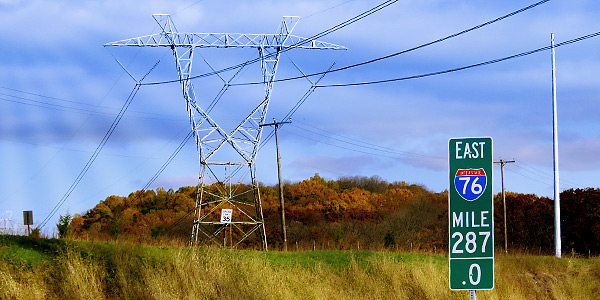PJM stakeholders continued debating changes to processes used to plan market efficiency transmission projects, including the creation of a new regional targeted market efficiency project (RTMEP) process that transmission owners say targets small projects addressing persistent congestion not identified in the forward-looking planning model and other members categorize as excluding competition.
In addition to the RTMEP proposal discussed at Thursday’s Market and Reliability Committee meeting, two additional changes are proposed to edit the way benefits are calculated for traditional market efficiency projects. The new processes were first endorsed at the May Planning Committee meeting. (See “Market Efficiency Process Packages Move to MRC,” PJM PC/TEAC Briefs: May 12, 2020.)
LS Power’s Sharon Segner said the current uncertainty over capacity market rules makes it difficult to move forward with the proposals, citing her company’s “strong concerns” about the proposal.
“We don’t feel this is the appropriate time to be tinkering with the market efficiency rules given the market upheaval that’s underway right now,” Segner said.
Jack Thomas of PJM provided an update of the phase 3 work completed at the Market Efficiency Process Enhancement Task Force (MEPETF), presenting the proposed solution package during a first read at the MRC.
Thomas said phase 3 work focused on creating the new RTMEP process while also looking at the benefit-to-cost calculations and the separation of energy and capacity benefits in calculations.
Stakeholders at the May 12 PC meeting endorsed a combined proposal by American Electric Power and FirstEnergy on the RTMEP process with 56% support. The package, which would exempt RTMEPs from competition, edged out PJM’s proposal (55% support), which called for 30-day competitive windows to select the developer.
The two packages are otherwise identical. Benefits are calculated based on the average of the past two years of day-ahead and balancing congestion, adjusted for outage impacts. To be approved, a project would have to recover its capital cost within four years.
The AEP-FirstEnergy proposal for the benefit calculation metric also was preferred, winning 54% to PJM’s 52%. AEP and FirstEnergy proposed averaging multiple Monte Carlo results and running them on Regional Transmission Expansion Plan (RTEP), RTEP+3 and RTEP+6 years. PJM’s proposal employed a single-draw Monte Carlo simulation, with simulations for both Reliability Pricing Model and RTEP years. Projects would be required to have a capital cost under $20 million and be in service within three years.
Robert Taylor of Exelon said that as more investigation has been done on the endorsed benefit calculation metric, “significant concerns” have arisen, and he requested that PJM take a deeper look at the issue. Without a cap on the number of Monte Carlo runs, the RTO could face a “never-ending series of analysis,” he said.
“We just don’t think the benefits outweigh what is going to be a massive increase in staff, servers and resources to go into that,” Taylor said.
PJM’s proposed window for capacity drivers won 52% support among stakeholders and 63% support over maintaining the status quo. The RTO proposed a 24-month cycle for energy drivers and a 12-month cycle for capacity following the Base Residual Auction.
The PC’s May 12 endorsement was the culmination of 18 months of work by the MEPETF. PJM is looking for endorsement at the Aug. 20 MRC meeting and a final vote at the Sept. 17 Members Committee meeting.
Segner said the task force has had more than 40 meetings over several years, with many of the proposals up for endorsement previously failing to receive enough votes to clear the PC. Generation and non-transmission alternatives can address congestion, she said, and the proposals shouldn’t discredit “market-driven alternatives.”
She said the proposals introduce a new idea of ordering transmission solely based on historical congestion, which differs from current practices in PJM markets that are designed to be forward-looking in the way generation and merchant transmission is developed.
“The grid is always evolving and changing so much in PJM,” Segner said.
Carl Johnson of the PJM Public Power Coalition said he has not been convinced that transmission is the solution to historical congestion that can’t be replicated in forward-looking models.
Catherine Tyler, a member of the Independent Market Monitor team, said congestion is “not inherently bad” and that the calculations used to evaluate the benefit-to-cost analysis ignore congestion increases, making the calculations flawed and not reflective of the actual benefit-to-cost. Tyler said transmission and generation don’t have the opportunity to compete with each other in the proposals, giving an advantage to transmission.
Tyler said PJM’s goal shouldn’t be to “copper plate” the system through unnecessary building projects when congestion could be resolved through generation or other means.
“Transmission should be built [based] on reliability, not cost and benefits,” Tyler said.
Taylor said he disagreed with the concept of congestion not being “inherently bad” and that the work done by the task force focused on cases where the market hasn’t responded in removing congestion and that would bring benefits to ratepayers. There’s value at looking at historical congestion, he argued.
“These are small, quick-hit projects and investments that have a significant and quick payoff for ratepayers,” Taylor said.
Paul Sotkiewicz of E-Cubed Policy Associates said the proposals are an attempt to guess where congestion will be in the near future without taking into account changes that can occur quickly.
Sotkiewicz also issued “caution” with moving forward with the proposals, pointing to actions in the early 2000s by the Alberta Electric System Operator (AESO), which conducted a transmission buildout in anticipation of load growth, with a goal of eliminating congestion in the system. He said AESO’s transmission costs now average about $30/MWh, driving customers to find ways to get off the system to avoid the charges.
He said that if PJM goes forward with current thinking in the proposals, it could be pushed into the same situation, with large customers looking for ways to shave off peak loads and get away from transmission costs.
“It looks like we’re driving up the cost of transmission with really no additional benefits,” Sotkiewicz said.




